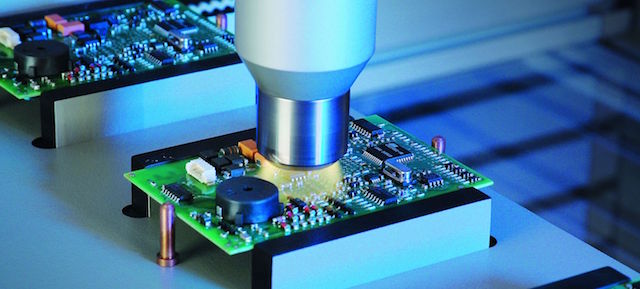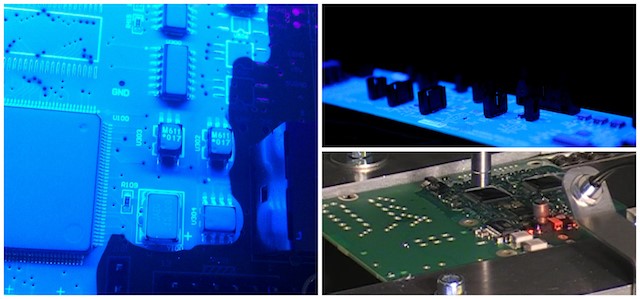Requirements for setting up a conformal coating facility
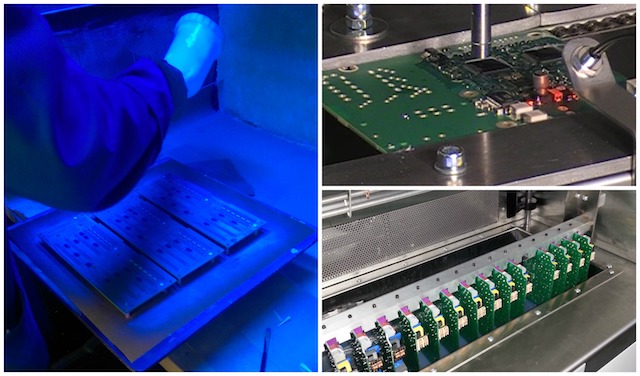
The set up of a conformal coating production line regardless of the application method has many similar characteristics.
Any coating facility will need the basic requirements put in place that would be standard for any piece of the electronic manufacturing process.
These include ESD systems, facilities for the machines, the environmental requirements, and the normal Health & Safety (HSE) considerations.
Click here to read more about the requirements of setting up a conformal coating facility.
Three key points you should know about polyurethane conformal coatings when using them for protecting electronic circuit boards
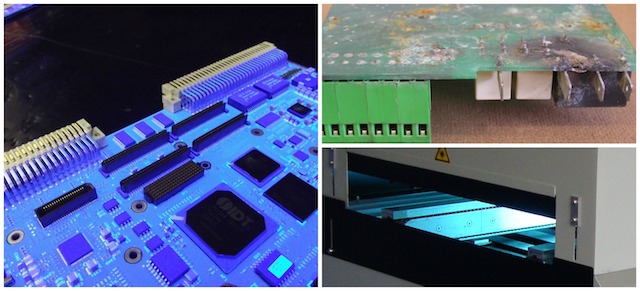
A polyurethane (urethane for short and designated UR by IPC) conformal coating is part of the organic family of coating materials that also includes the acrylic and epoxy coatings.
Click here to learn more about polyurethane conformal coatings.
What are conformal coating masking boots and why do they save you money?
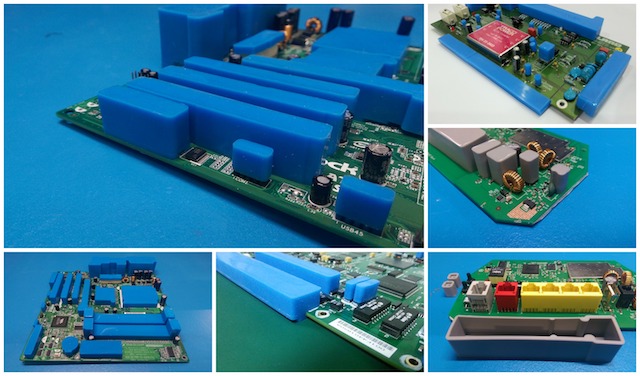
Reusable conformal coating masking boots are a highly cost effective alternative masking material to masking tape.
Many components on printed circuit boards must remain uncoated when applying conformal coating. The purpose of masking is to prevent migration of the conformal coatings into components and keep out areas.
Click here to read more about masking boots
What are the different methods available for cleaning electronic circuit boards?
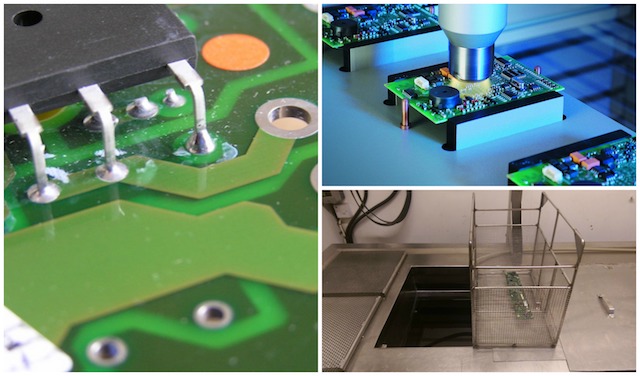
The topic of cleaning printed circuit board assemblies (PCBAs) effectively before application of conformal coating can be daunting. This is because the process of cleaning circuit boards can be difficult especially with so many variables to consider.
Click here to read more about the different methods available for cleaning electronic circuit boards
Want to find out more about cleaning?
Contact us to discuss your needs and let us explain how we can help you.
Or, read more on cleaning circuit boards on our website now.
Contact us now.
The science behind fluoropolymer coatings for protecting electronic circuit boards
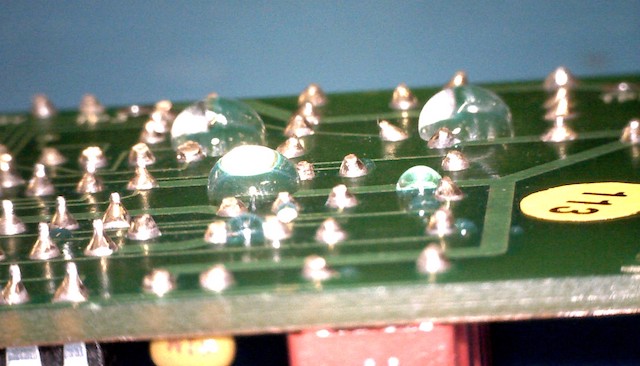
Nano-coatings are being used regularly to protect printed circuit board assemblies.
This is because the material they are made of fluorinated polymers and these materials have very specialized properties that produce very different results to traditional conformal coatings.
Click here to read more about the science behind fluoropolymer coatings for protecting electronic circuit boards
Five key facts about using fluoropolymer Nano-coatings for protecting printed circuit boards
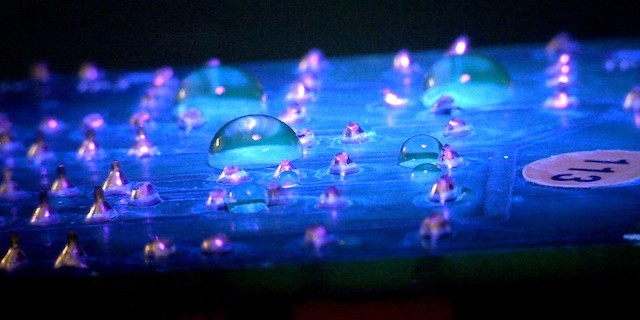
- A Nano-coating is hydrophobic. It repels water from the surface of the circuit board and water will not wet the circuit.
- The Nano-coatings are extremely thin (<2um). They are very different to traditional conformal coatings.
Click here to read more about Five key facts about using fluoropolymer Nano-coatings for protecting printed circuit boards
Nexus article on, “Outsourcing your conformal coating project – The key points”
Nexus, the independent conformal coating resource, recently published an article on subcontracting your conformal coating services out to a third party.
I thought it would be useful to signpost people to this article and republish the points they raised since getting it right can be so critical in outsourcing.
Nexus identified that there are, “three key points to consider when choosing a subcontractor”.
Click here to read more about Nexus’ article on, “Outsourcing your conformal coating project – The key points”
What is a fluoropolymer nano coating and how can it protect my circuit board?

A fluoropolymer Nano-coating is an ultra-thin film comprised of fluorocarbons and characterised by carbon-fluorine bonds.
Chemically inert, fluorocarbons are not susceptible to Van der Waals force. This means that films formed using these materials are non-stick (hydrophobic and water repellent) and friction reducing.
Also, due to the fluorine bonds, these Nano-coatings demonstrate a high level of chemical resistance to acids, bases and most solvents.
This makes them interesting materials for protecting electronic circuits.
Click here to read more about Fluoropolymer nano-coatings.
Do you need UL qualification for your conformal coating?
UL are the Underwriters Laboratories and are a global safety certification body for consumer electronics.
They are a 3rd Party test service. There is no self-certification available.
A qualification to UL can be used as a sign of quality control and testing independently of the coatings protective ability.
Click here to find out more about UL qualification for your conformal coating?
Find out how we can help you with your conformal coating process now.
Contact us to discuss your needs and let us explain how we can optimise your process for you.
How do I selective apply my conformal coating?
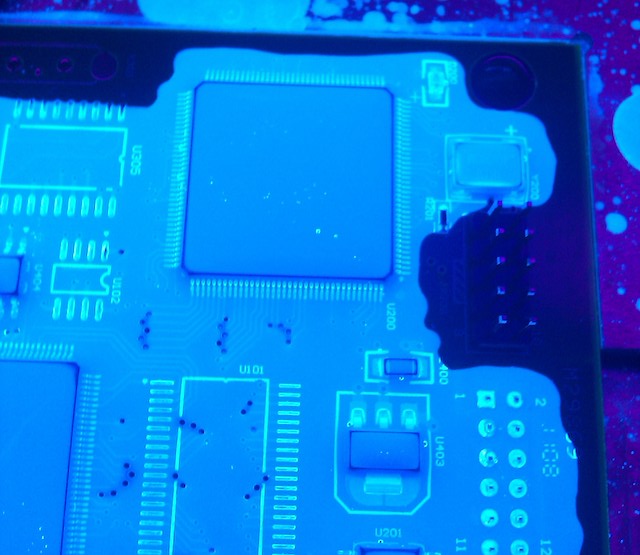
Selective application of conformal coating is this case is applying the conformal coating without using masking to shield components from ingress.
Technically using masking tapes, latex and boots is a selective process. But, we want to look at coating application without masking.
This leaves a couple of different options.
Click here to read more about how to selectively apply conformal coating.
Find out how we can help you with your conformal coating process now.
Contact us to discuss your needs and let us explain how we can optimize your process for you.
How do conformal coating masking boots save money in your production process?

Three reasons conformal coating masking boots save you money
Here are three reasons that can save you up to 80% of your costs compared to masking tape:
- Masking time is reduced. Masking boots can be 4-5 times quicker than masking tape.
Click to read more on about how do conformal coating masking boots save money in your production process
Find out how we can help you with your conformal coatings now.
Contact us to discuss your needs and let us explain how conformal coatings could work for you.
Are there design rules for the conformal coating dip application?
There are design guidelines that can be used to help make conformal coating of circuit boards using the dip process a lot easier.
Having these specific design rules for dipping conformal coating can help save a lot of time, money and trouble on the production line.
Click to read more on about design rules for the conformal coating dip application
Find out how we can help you with your conformal coatings now.
Contact us to discuss your needs and let us explain how conformal coatings could work for you.
What application methods are available for applying conformal coating?
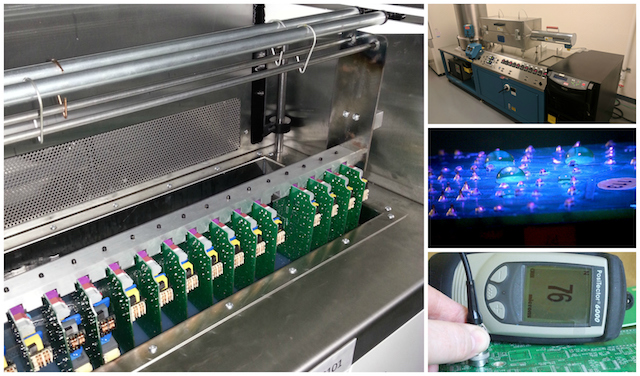
Conformal coatings can be applied to printed circuit boards (PCB) in the production process environment in many alternative ways.
Listed below are the common methods of applying the conformal coating materials.
- Brushing
- Aerosol spray
- Batch spray
- Selective spray
- Dipping
- Vapour deposition
Click to read more on about application methods available for applying conformal coating
Find out how we can help you with your conformal coatings now.
Contact us to discuss your needs and let us explain how conformal coatings could work for you.
What is a hydrophobic acrylic conformal coating?
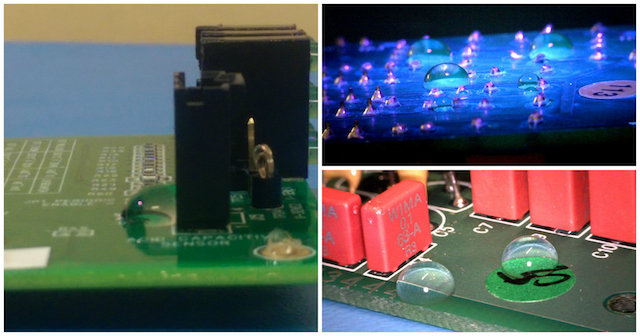
There are several reasons for using a conformal coating to protect a printed circuit board (PCB).
They include:
- High insulation protection
- High moisture and humidity protection
- Chemical and temperature resistance
- Ruggedisation
- Improve dielectric properties
- Barrier protection against particulates
However, one property that most liquid conformal coatings do not possess that is extremely useful to have is being water repellent or hydrophobic.
Click to read more about hydrophobic acrylic conformal coatings.
Find out how we can help you with your hydrophobic acrylic conformal coatings now.
Contact us to discuss your needs and let us explain how our hydrophobic coatings could work for you.
How do I spray coat my conformal coating?
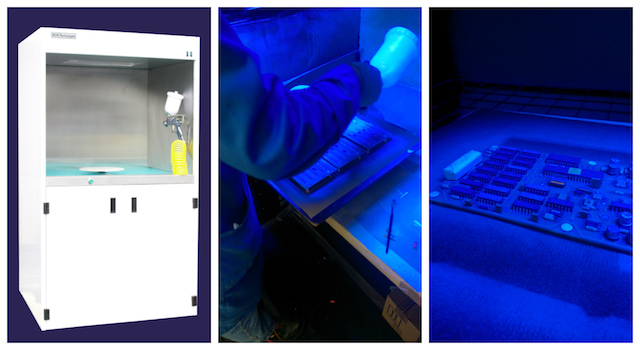
Batch spraying is one of the widest used techniques used in low and medium volume conformal coating processing.
Whether you are using a compressed air spray gun or an aerosol can, the conformal coating is sprayed across the whole of the circuit board.
It can produce a high quality coating finish that gives the best protection due to good edge coverage.
However, it is not a selective process. All parts are coated on the circuit board.
Therefore, masking may be required to protect components that must not be coated.
Click to read more on How do I spray coat my conformal coating
Find out how we can help you with your conformal coatings now.
Contact us to discuss your needs and let us explain how conformal coatings could work for you.
The ABCs of ultra-thin fluoropolymer coatings for electronic circuit boards
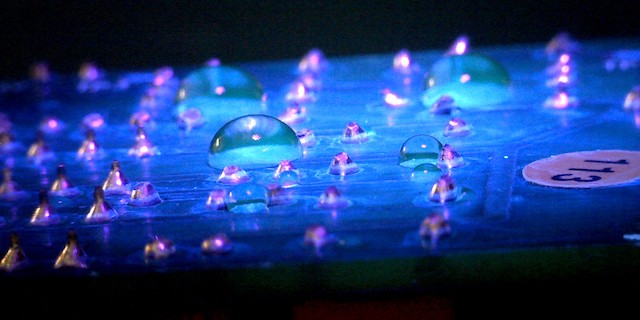
A fluoropolymer coating for electronics is typically an ultra-thin coating comprised of fluorocarbons and characterized by carbon-fluorine bonds.
They have many interesting properties that are especially important for printed circuit boards.
Read more to find out:
- What is a fluoropolymer coating?
- What are the key properties for electronic circuit boards?
- What other properties do the fluoropolymer coatings have that may be relevant in electronics?
- What sectors of industry are fluoropolymer coatings being used in protecting electronics?
- What are the major differences between a fluoropolymer coating and a conformal coating for protecting an electronic printed circuit board or assembly?
Click to read more on The ABCs of ultra-thin fluoropolymer coatings for electronic circuit boards
Find out how we can help you with your ultra-thin hydrophobic coatings now.
Contact us to discuss your needs and let us explain how hydrophobic coatings could work for you.
Contact us now.
How thick should I apply my conformal coating?
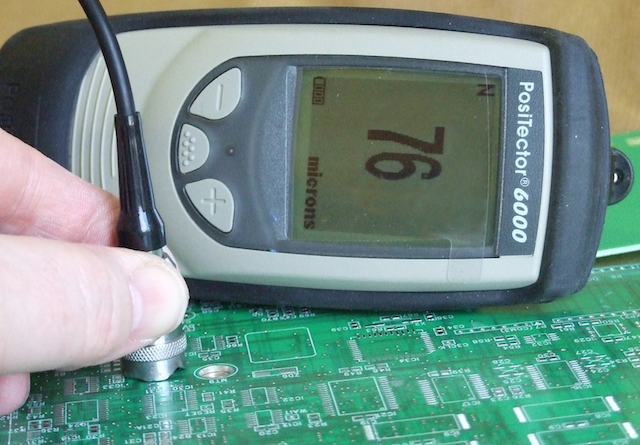 So, here is a question I am regularly asked. How thick should the conformal coating be on the circuit board?
So, here is a question I am regularly asked. How thick should the conformal coating be on the circuit board?
Well, the simple answer is thick enough so the conformal coating works and protects the circuit board.
But not too thick as this can cause problems for the circuit board in the long term.
After all, the performance of the conformal coating is dependent on the thickness applied.
But, it is possible to quantify this a little more.
Find out how one company saved 60% of their process costs by changing to custom conformal coating masking boots
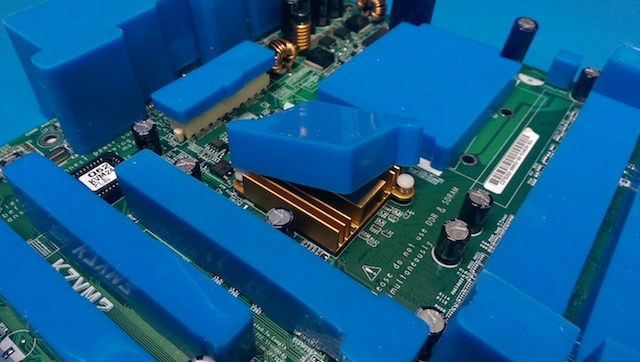 Diamond MT, a conformal coating service provider in the USA, found they saved more than 60% of their current masking costs by switching to the SCH range of conformal coating masking boots.
Diamond MT, a conformal coating service provider in the USA, found they saved more than 60% of their current masking costs by switching to the SCH range of conformal coating masking boots.
Sean Horn, Diamond MT, explains how they did it.
“We had initially wanted to try SCH’s conformal coating masking boots for price savings. However, once we began to work with Lee on our specific masking application, we realised that we could extend the life of our boots over 200%. We switched immediately!
We then realised the importance of working with someone who understands coatings. We will not being going back to our previous supplier.”
Sean Horn, Director, Diamond MT, conformal coating subcontract service provider.
How do I correctly dip coat my circuit board in conformal coating?
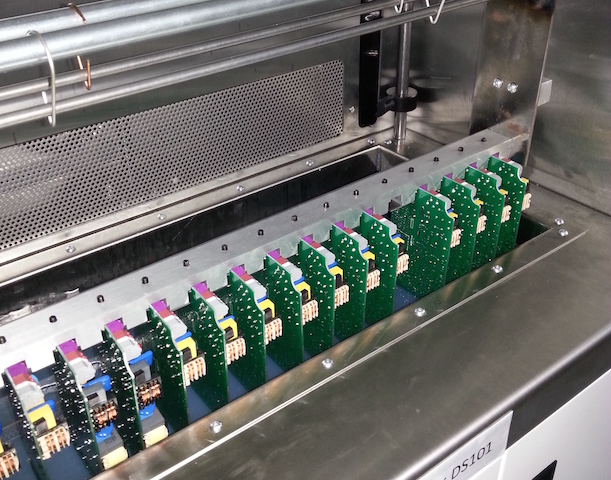 Dip coating is a traditional conformal coating application method that has been used to conformal coat circuit boards for a very long time.
Dip coating is a traditional conformal coating application method that has been used to conformal coat circuit boards for a very long time.
The process in its simplest form is as follows:
- The printed circuit board (PCB) is dipped into a tank of conformal coating liquid.
- This can be complete submersion or partial dip.
- The board can be dipped vertically, horizontally or at another angle.
- The board can be dipped manually or automatically.
- The board is removed from the coating and the excess coating drains away.
This process is highly effective in applying a conformal coating to a printed circuit board (PCB).
How do I brush coat my conformal coating?
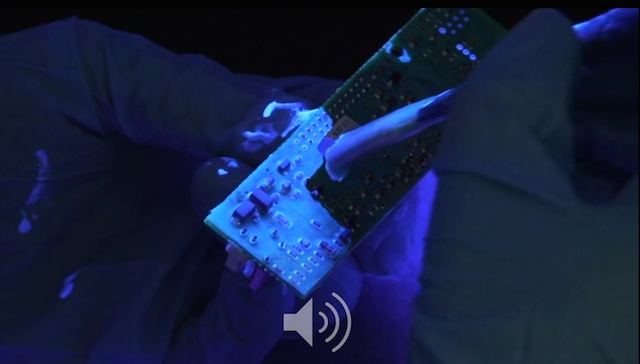 The correct technique for applying conformal coating by brush is to flow the coating on.
The correct technique for applying conformal coating by brush is to flow the coating on.
The material should not be brushed on like you are decorating with paint.
The coating should be loaded on to the brush and flowed onto the printed circuit board.
How do I measure conformal coating thickness?
There are several ways to measure the conformal coating thickness on a printed circuit board (PCB). They can be either used on dry or wet film coating.
These techniques include:
- Non-destructive eddy current system
- Micrometer screw gauge
- Wet film gauge
What are the alternative materials to liquid conformal coatings?
There are several alternative coatings available to the traditional conformal coating materials.
These alternative coatings include:
- Other Chemical Vapour Deposition (CVD) films
- Fluorinated ultra-thin and thin film coatings
- Molecular Vapour Deposition (MVD) coatings
- Atomic Layer Deposition (ALD) coatings
Is there a free guide on conformal coating defects?
Nexus, the independent conformal coating information site, provide an information section on conformal coating defects in their free online Ebook.
Why does cleaning improve the adhesion of the conformal coating?
In general it is important that conformal coatings have good adhesion in order to be effective. However, there is no single theory that describes the property of adhesion for conformal coatings.
There are three basic mechanisms for conformal coatings that are known to help with good adhesion.
What are the different techniques for cleaning a circuit board?
Nowadays, there are many different methods and media for cleaning circuit boards. That includes low, medium and high volume production levels.
However, when considering a new process then you the key issues can be broken down into two different categories.
These are the:
- Different chemistries / media to be used
- Different methods / techniques to be used
Lets consider the categories in a little more detail.
Are there design rules for applying conformal coatings?
Conformal coating is not simply a consumable material. Unfortunately, for too many designers, conformal coating is simply a part number, to be applied to circuit boards.
However, this can be a major problem especially in the conformal coating production stage of the process.
There are guidelines in the IPC standards that may help with Design for Manufacture (DFM) principles. These are worth considering.
Unfortunately, there are no official design guidelines that will help directly with the application process and conformal coating.
Do you need MiL spec qualification for your conformal coating?
Normally, customers know if they require MIL-I-46058C qualification for their conformal coating. It normally is required if it is a military product.
However, caution should be shown when examining conformal coating datasheets that state MEET the requirements of MIL-I-46058C since the conformal coating will likely not be on the Qualified Product List (QPL).
What is plasma cleaning?
Plasma cleaning is a process of using plasma energy to clean and modify the surface of a substrate like a circuit board assembly.
It is a highly effective surface cleaning and treatment process before application of conformal coatings and is gaining more popularity due its highly effective performance.
How to clean “no clean” flux residues and get it right
Cleaning the residues left behind by a no clean flux process is one of the most difficult tasks when considering cleaning.
After all, the residues left on the circuit board are not formulated to be cleaned away easily.
The ABCs of Atomic Layer Deposition (ALD)
What is ALD?
Atomic Layer Deposition (ALD) belongs to the family of Chemical Vapour Deposition methods (CVD).
It is a deposition process at a nano-scale level within an enclosed vacuum chamber.
The deposition process forms ultra-thin films (atomic layers) with extremely reliable film thickness control.
This provides for highly conformal and dense films at extremely thin layers (1-100nm).
Introducing a new coating that could offer the ultimate protection for LEDs without compromise to performance or process cost!
The need to protect LEDs from the long –term exposure of a harsh environment is becoming more and more required. This is doubly so for LEDs used outdoors.
The alternative coatings used to protect LEDs are many. They include conformal coatings, ultra-thin fluoropolymer materials and encapsulates.
However, none of the material processes offer the perfect protection without adding significant cost to the production process, and ultimately the circuit board and product.
Further, to reduce costs in production some of the coating materials used compromised performance. So, there is a typical balance of costs versus protection.
Now, this may all change with the introduction of a very new coating process that takes many of the performance benefits of the best coatings but does not suffer the associated problems of increased production costs.
This process is a hybrid ALD (Atomic Layer Deposition)/CVD (Chemical Vapor Deposition) technique.
What are conformal coating masking boots and how can they save you money?
The use of masking materials such as tapes, dots and liquid latex can be a highly effective process in protecting components from ingress of conformal coating.
However, the masking process can be labour intensive, difficult and time consuming.
Using reusable, custom masking boots offers a labour saving alternative in both the masking and de-masking stages of the coating process.
This can save you lots of time and money.
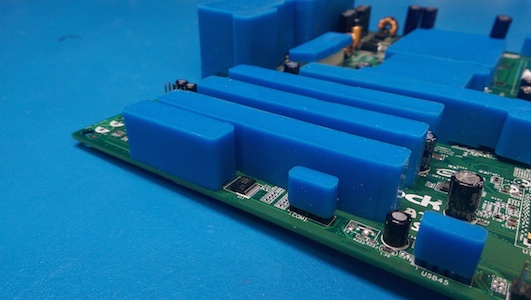
What is Plasma coating?
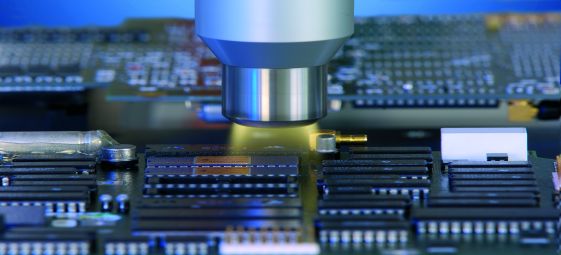
Plasma coating is the application of a nano-coating material onto a surface via a plasma.
Using a jet nozzle the material is supplied to the plasma. Next, the plasma excites the material and this increases the coatings reactivity.
This extra reactivity allows the material to optimally cover the surface of the substrate and bond much tighter.
The plasma coating process can be adjusted individually to the substrate. It can be used to coat different materials like metals, glass, ceramics and plastics.
The ABCs of plasma cleaning for conformal coating
Plasma cleaning is a process that is gaining more popularity in thin film applications due its highly effective performance on cleaning and modifying surfaces.
It is also a highly effective surface cleaning and treatment process before application of conformal coatings.
